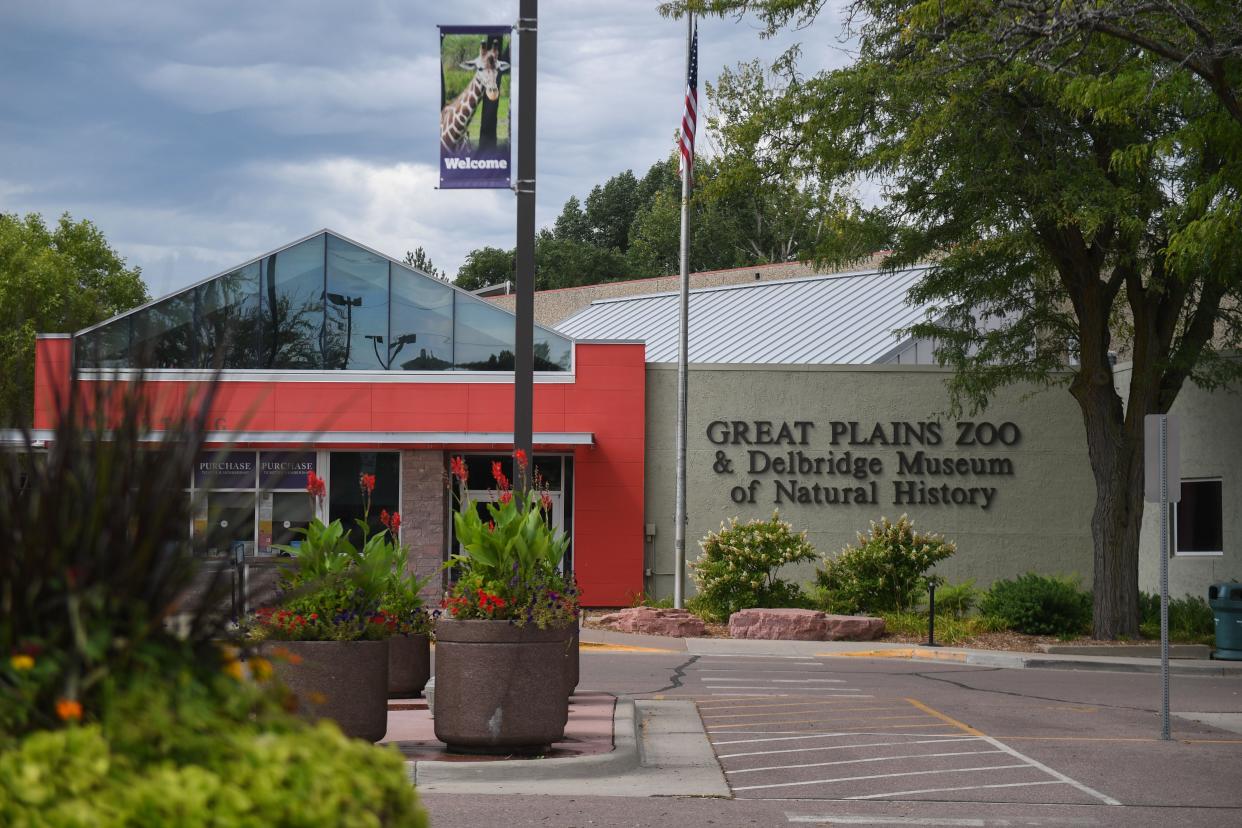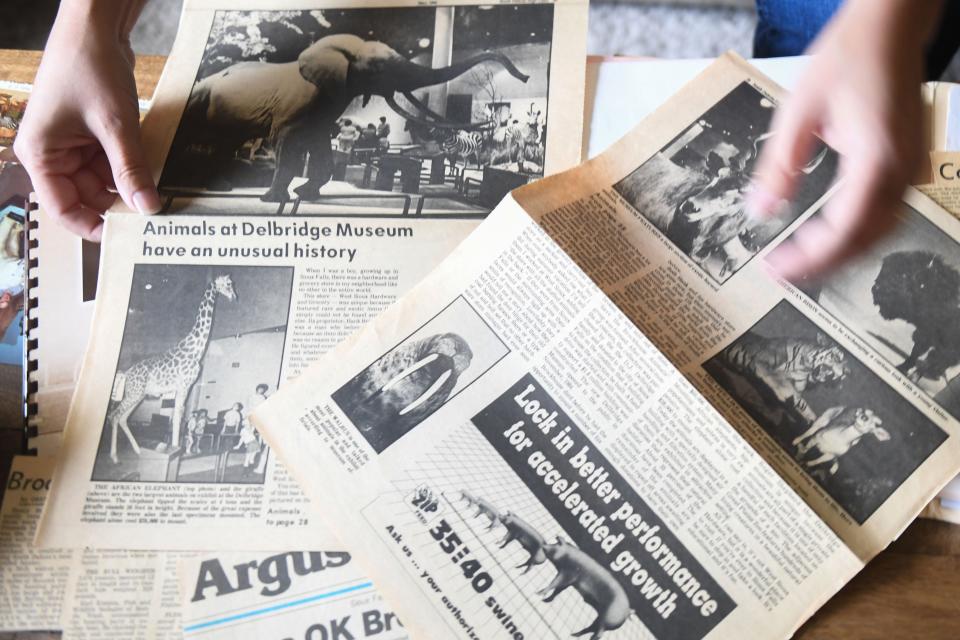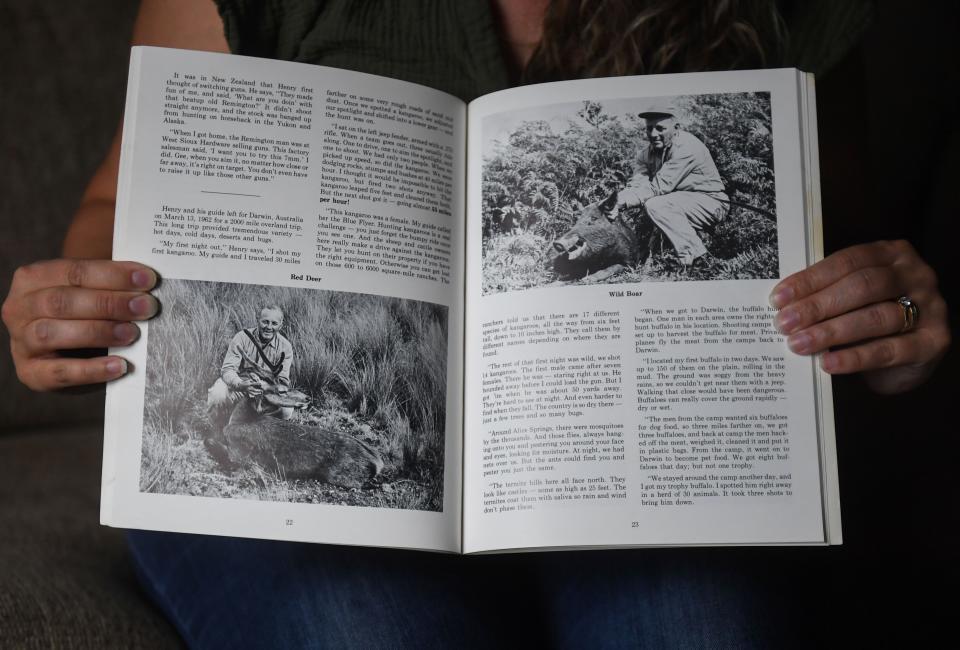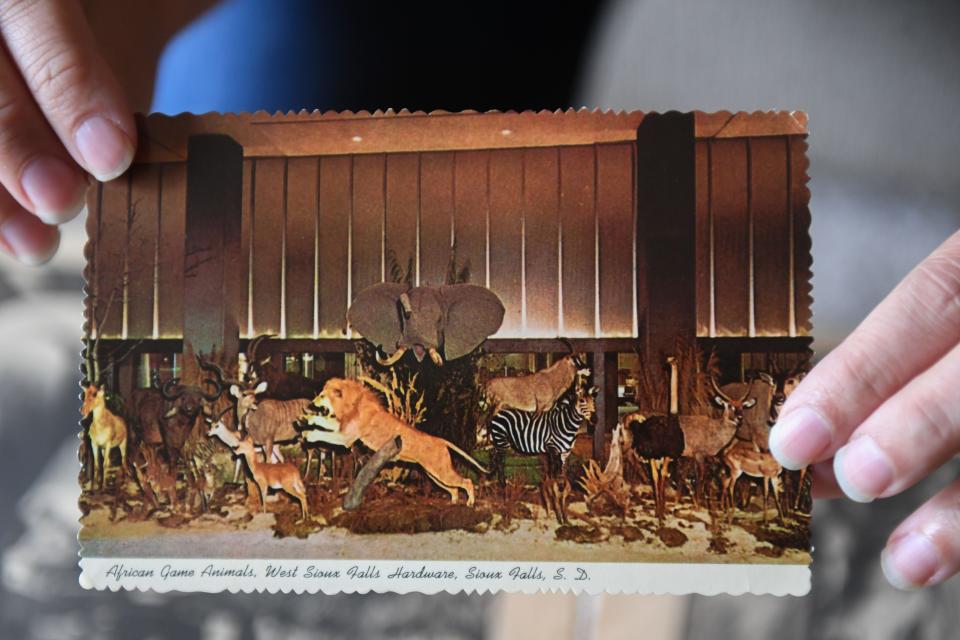How the confusing, controversial saga of the Delbridge Museum unfolded

- Oops!Something went wrong.Please try again later.
Everyone in Sioux Falls seems to know the real story behind what’s going on with the Great Plains Zoo’s Delbridge Museum, which closed last month after tests showed that many of the taxidermy animals contained detectable levels of arsenic.
The problem? No one can agree on exactly what that real story is. Just read some comments online, or watch the replay of Tuesday’s informational meeting, which featured nearly an hour of public input on the topic.
Take those arsenic levels, for example. Some residents seem convinced they’re being overstated by the city. Others at public input were more focused on the fact that arsenic can be found in other places at levels deemed acceptable, like the city’s water supply, or apple juice. Some took the opportunity to compare it to what they saw as an overreaction to the COVID-19 pandemic.
Among other members of the public, there seems to be an underlying fear that this is all a ploy to create space for the Butterfly House and Aquarium, which merged with the zoo earlier this year.
And more than one person has posited that this all stems from listening to people who are anti-hunting.
Mayor Paul TenHaken and other city officials, however, have expressed frustration with “misinformation” around some of these narratives and others, like whether the “disposition” of the mounts could involve them simply being sent to the landfill.
“I know that’s a popular narrative to say, but we wouldn’t just take artifacts like this and treat them like a Papa John’s pizza box,” TenHaken said at an Aug. 29 press conference.
But the reasons that the city and zoo chose to close the museum — and what may happen to the animals inside — weren't exactly clear from the start.

Why did the city close Delbridge?
So what are the reasons the city and the zoo have given for making the joint decision to close down the museum and look for the surplus of the collection?
It started with safety.
“Prior to the 1980s, it was common to use strong chemicals in the taxidermy process all over the world for preservation of the hides,” reads the statement on the zoo’s website that initially outlined the closure on Aug. 16 — though the museum had been closed since Aug. 1, when they received the arsenic test results.
It also explains that the railings and signage asking patrons not to touch the animals are partially due to these chemicals.
“As the specimens continue to age, there is more potential for chemical exposure, and we are proactively protecting our visitors and staff,” the statement continues. “Out of an abundance of caution, leaders from the City of Sioux Falls and Great Plains Zoo have agreed to decommission the collection. This difficult decision was reached after extensive discussion, research, testing, and consultations about best practices to manage aged taxidermy with experts at other reputable museums.”
Then, as zoo and city officials began speaking with media throughout the following weeks, more details on the decision began to come out.
Zoo officials had already been looking at ways to update the museum and its presentation to visitors before the tests that showed the arsenic levels. Once they had them, zoo CEO Becky Dewitz said she believed encasing the animals in glass would be too costly, though they couldn’t initially name a figure they expected to pay.
There was also the question of legal risk to the city, something TenHaken noted several times at an Aug. 29 press conference as he explained why he’d still be concerned even if someone showed up with cash to build enclosures for the animals or an offer to take them away.
"We don't have the appetite for it," he said. "There's just too many hoops and too many challenges with it."
Later, he added "If we give a collection with known carcinogens to someone, we know there was carcinogens and now someone else owns it, there's still reversionary risk that we've maintained if something happens in that person's ownership of it."
City says some options would be costly

A Sept. 5 informational meeting had the most specifics on the decision yet. Putting aside the arsenic, an assessment of the collection found that 15% of the mounts were in either “fair” or “poor” condition.
When they were tested, nearly 80% of them were positive for arsenic, ranging from 0.5 mg/kg to 54.6 mg/kg.
“From the City’s legal perspective, there is no research that shows ‘safe’ levels of arsenic,” the presentation said.
As for those costs? A cost analysis presented by the city showed that keeping the collection where it is — which would include adding glass enclosures and upgrading the ventilation systems — is between $3.4 and $4.2 million. That’s without looking at the costs of restoring the mounts or updating the museum’s presentation.
And to construct a new building for the collection would cost $13.68 million, the city estimates.

'We're moving forward to the next chapter'
Zoo CEO Becky Dewitz has also said that attendance at the museum is less than stellar, and that even before the arsenic concerns, they’d considered downsizing the collection to the most well-preserved mounts, maybe in a different location.
That, in addition to the presentation’s specifics on the importance of the accessible and climate-controlled building in which the collection sits, certainly imply that the city and zoo see, and have seen, it as underutilized.
Less a conspiracy, perhaps, and more of a business decision. It’s certainly how TenHaken sounded when he said he saw the museum as a “stage of history” from which the city was moving forward.
"I know that's sometimes uncomfortable to say, 'Hey, this chapter was great but we're moving forward to the next chapter,'" he said.
Whether the city will indeed move on from the collection, however, is also unclear. City officials have already signaled that they'd consider preserving some of the better-kept and arsenic-free animals. And TenHaken announced Friday he formed a work group to determine a more specific surplus plan for each specimen, with results expected by the end of the year.
For now, the walls stay up inside Delbridge Museum, as do the animals.
This article originally appeared on Sioux Falls Argus Leader: How the confusing, controversial saga of the Delbridge Museum unfolded

